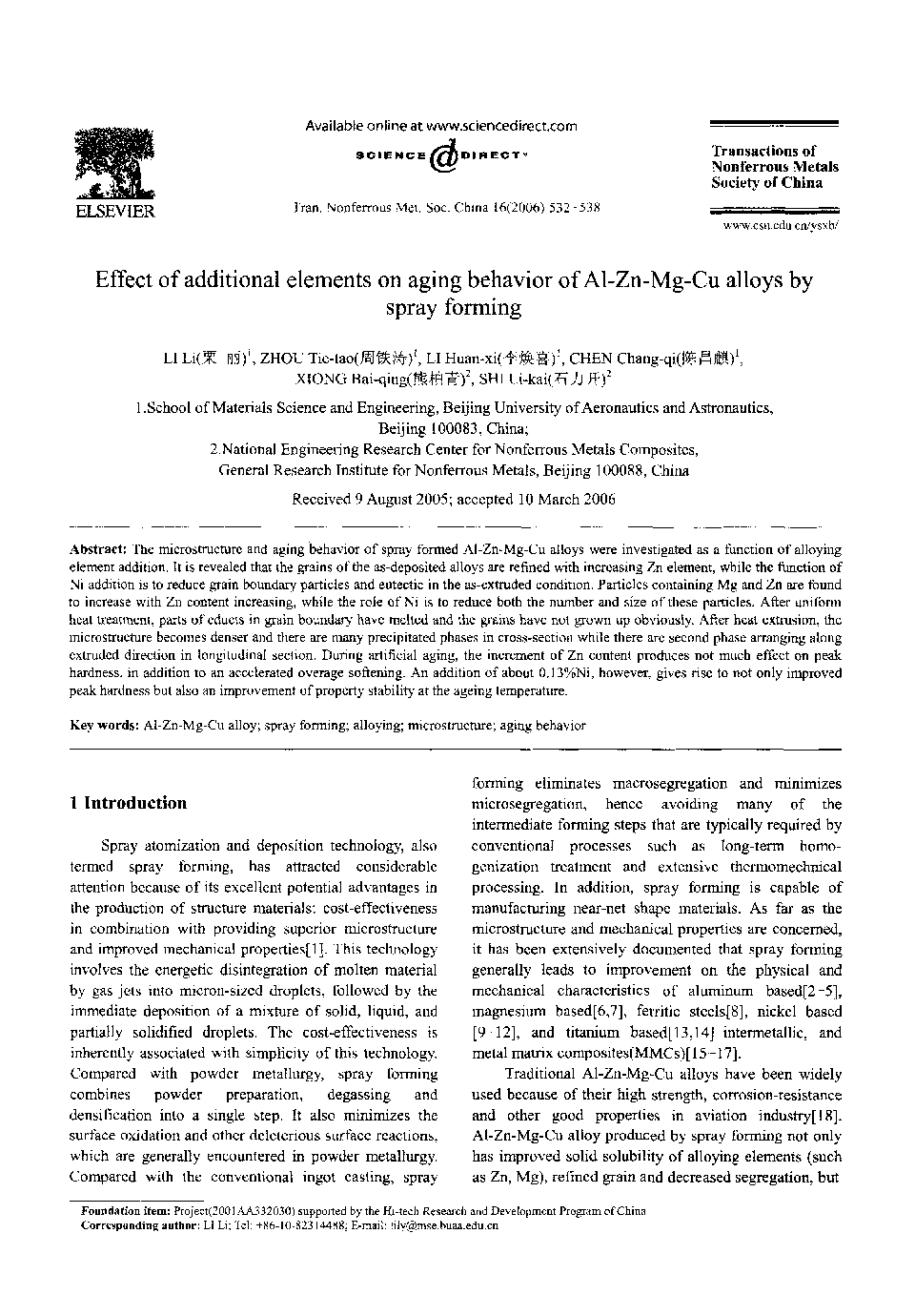| Article ID | Journal | Published Year | Pages | File Type |
|---|---|---|---|---|
| 1640179 | Transactions of Nonferrous Metals Society of China | 2006 | 7 Pages |
Abstract
The microstructure and aging behavior of spray formed Al-Zn-Mg-Cu alloys were investigated as a function of alloying element addition. It is revealed that the grains of the as-deposited alloys are refined with increasing Zn element, while the function of Ni addition is to reduce grain boundary particles and eutectic in the as-extruded condition. Particles containing Mg and Zn are found to increase with Zn content increasing, while the role of Ni is to reduce both the number and size of these particles. After uniform heat treatment, parts of educts in grain boundary have melted and the grains have not grown up obviously. After heat extrusion, the microstructure becomes denser and there are many precipitated phases in cross-section while there are second phase arranging along extruded direction in longitudinal section. During artificial aging, the increment of Zn content produces not much effect on peak hardness, in addition to an accelerated overage softening. An addition of about 0.13%Ni, however, gives rise to not only improved peak hardness but also an improvement of property stability at the ageing temperature.
Related Topics
Physical Sciences and Engineering
Materials Science
Metals and Alloys
Authors
LI Li, ZHOU Tie-tao, LI Huan-xi, CHEN Chang-qi, XIONG Bai-qing, SHI Li-Kai,
